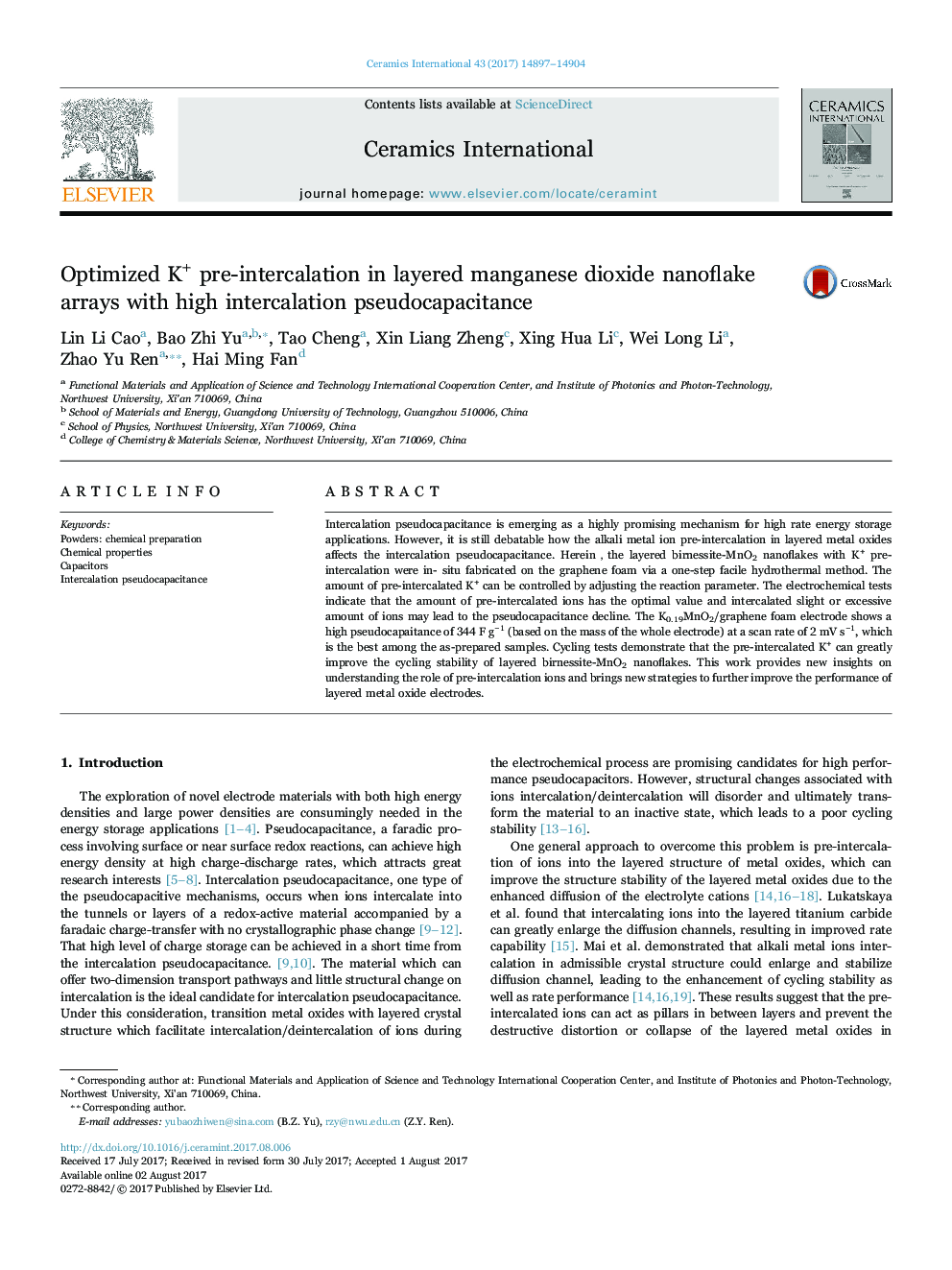| Article ID | Journal | Published Year | Pages | File Type |
|---|---|---|---|---|
| 5437373 | Ceramics International | 2017 | 8 Pages |
Abstract
Intercalation pseudocapacitance is emerging as a highly promising mechanism for high rate energy storage applications. However, it is still debatable how the alkali metal ion pre-intercalation in layered metal oxides affects the intercalation pseudocapacitance. Hereinï¼the layered birnessite-MnO2 nanoflakes with K+ pre-intercalation were in- situ fabricated on the graphene foam via a one-step facile hydrothermal method. The amount of pre-intercalated K+ can be controlled by adjusting the reaction parameter. The electrochemical tests indicate that the amount of pre-intercalated ions has the optimal value and intercalated slight or excessive amount of ions may lead to the pseudocapacitance decline. The K0.19MnO2/graphene foam electrode shows a high pseudocapaitance of 344Â FÂ gâ1 (based on the mass of the whole electrode) at a scan rate of 2Â mVÂ sâ1, which is the best among the as-prepared samples. Cycling tests demonstrate that the pre-intercalated K+ can greatly improve the cycling stability of layered birnessite-MnO2 nanoflakes. This work provides new insights on understanding the role of pre-intercalation ions and brings new strategies to further improve the performance of layered metal oxide electrodes.
Related Topics
Physical Sciences and Engineering
Materials Science
Ceramics and Composites
Authors
Lin Li Cao, Bao Zhi Yu, Tao Cheng, Xin Liang Zheng, Xing Hua Li, Wei Long Li, Zhao Yu Ren, Hai Ming Fan,
